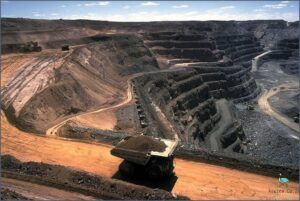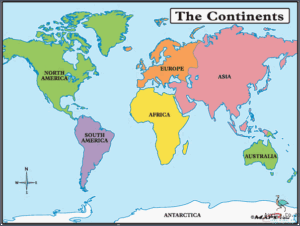
The South Africa Atlas is a comprehensive resource for anyone interested in exploring the country of South Africa. It provides detailed information on the geography, climate, history, culture, economy, and government of South Africa. The atlas features maps of the country and its provinces, as well as maps of major cities and their surroundings. It also includes an overview of the country’s population demographics and its major ethnic groups. Additionally, the atlas provides detailed information about South Africa’s natural resources, its economy, and its major industries. The atlas also offers information about the country’s major infrastructure projects and economic reforms. Finally, the atlas also offers a list of South Africa’s major tourist attractions and national parks. This comprehensive resource is an invaluable tool for travelers, researchers, and those interested in learning more about the fascinating country of South Africa.
Contents
South Africa Atlas
The South Africa Atlas is an invaluable resource for anyone interested in learning more about this vast and diverse country. The atlas contains detailed maps, showing physical features and other geographical information. It also includes a variety of charts and tables that provide an overview of the population, climate, and economy of South Africa. The atlas also features an array of photographs and illustrations that help to bring the country to life. In addition, the South Africa Atlas contains information on the history and culture of the nation, making it an essential resource for anyone looking to explore this incredible nation. With its comprehensive approach to the country, the South Africa Atlas is an invaluable resource for anyone wanting to better understand the culture and history of this fascinating nation.
Geography of South Africa
South Africa is a country of immense geographical diversity. It boasts everything from sandy beaches and lush forests to arid deserts and snow-capped mountains. This South Africa atlas will take you on an exploration of the country’s varied and beautiful landscapes.
The country can be divided into three main regions: the coast, the interior, and the extreme south. The coastal belt is made up of the Western Cape, Eastern Cape, KwaZulu-Natal, and Northern Cape provinces. This region is home to some of the country’s most stunning beaches, as well as its most vibrant cities.

The interior region consists of the provinces of Limpopo, Mpumalanga, Gauteng, and North West. This is a land of sweeping savannahs, rolling grasslands, and rugged mountains. It is also home to some of South Africa’s most important national parks and game reserves.
The extreme south is made up of the provinces of the Free State and the Northern Cape. This is a region of dramatic landscapes, with vast stretches of desert, mountains, and plains. The Orange River forms the border between South Africa and Namibia, while the Drakensberg Mountains form the border with Lesotho.
No matter where you go in South Africa, you will find stunning diversity. From the sun-kissed beaches of the coast to the rugged mountains of the interior, there is something for everyone. The country is a place of extraordinary beauty and the South Africa atlas will take you on a journey through its diverse landscapes.
History of South Africa
South Africa has a rich and storied history that has shaped the country into what it is today. From ancient times to the present day, South Africa has been a melting pot of cultures and civilizations, a land of exploration and conquest, and a nation of immense natural beauty.
The earliest human inhabitants of South Africa were the San, a hunter-gatherer people who were believed to have lived in the region for over 20,000 years. They left behind a rich legacy of rock art, tools and weapons, and other artifacts that can still be found in the region today.
By the 12th century, Bantu-speaking people had begun to settle in the region, and by the 16th century, the powerful Nguni people had established the Zulu kingdom that would later become the largest of the many chiefdoms in the region.

The Dutch East India Company arrived in the 17th century and began to establish colonies along the coast, and in the 19th century, the British seized control of the Cape Colony. This ushered in a period of colonial rule, during which the Afrikaners, or Boers, began to settle in the interior regions of the country.
In 1910, the Union of South Africa was formed, and by the mid-20th century, the country had become a major producer of gold and diamonds. This attracted a wave of foreign investment and economic growth, as well as a period of political and social upheaval.
In 1948, the National Party, led by Daniel F. Malan, came to power and instituted a system of racial segregation known as ‘apartheid’. This system of segregation and oppression lasted until 1994, when South Africa held its first democratic elections, putting an end to the era of segregation and ushering in a new era of freedom and democracy.
Today, South Africa is a vibrant and diverse nation, with a rich cultural heritage and a unique and varied landscape. From its stunning mountains and rolling hills, to its rolling savannas, beautiful beaches, and awe-inspiring deserts, South Africa is a land of breathtaking beauty and immense history. It is a land of many cultures and many stories, and it is proudly displayed on the South Africa Atlas.
Economy of South Africa
From the vast plains of the Kalahari Desert to the bustling cities of Johannesburg and Cape Town, South Africa is a country of stunning contrasts. As one of the most economically advanced countries on the African continent, South Africa’s economy is one of the most diverse and dynamic in the world.

The South African economy is based on a mix of industries and services, including tourism, mining, manufacturing, finance, and agriculture. This combination of sectors has enabled the country to experience strong economic growth over the past decade. According to the World Bank, South Africa’s real gross domestic product (GDP) grew by 2.3 percent in 2019.
The mining sector is a major contributor to the South African economy. The country is the world’s largest producer of platinum and gold, and is also a major producer of base metals such as iron ore, manganese, chrome, and vanadium. The country also has a robust manufacturing sector, which is focused on producing a range of products such as chemicals, automotive parts, and food products.
Tourism is a major source of revenue in South Africa, with nearly 12 million tourists visiting the country each year. The tourism industry contributes approximately 10 percent of the country’s GDP, and is largely responsible for the creation of thousands of jobs in the country.
Agriculture is another key industry in South Africa. The country produces a range of crops, including sugarcane, corn, wheat, and citrus fruits. South Africa is also a major producer of wool, mohair, and dairy products.
The services sector is also a major contributor to the South African economy. This sector includes banking, insurance, telecommunications, and transportation. In addition, the country is also home to a thriving IT sector, which is responsible for the development of innovative technologies.
Overall, the South Africa Atlas provides an in-depth look at the country’s economy. From its mix of industries and services to its impressive growth over the past decade, South Africa is a country that has much to offer to the world economy.
Conclusion
The South Africa Atlas is a valuable tool for understanding the geography, history and culture of South Africa. It provides a comprehensive overview of the country, with detailed maps, charts and illustrations that make it easy to see the many layers of South African society. It also contains a wealth of information on the country’s government, economy and people, as well as its numerous attractions. Overall, the South Africa Atlas is a must-have for anyone looking to better understand this diverse country.




